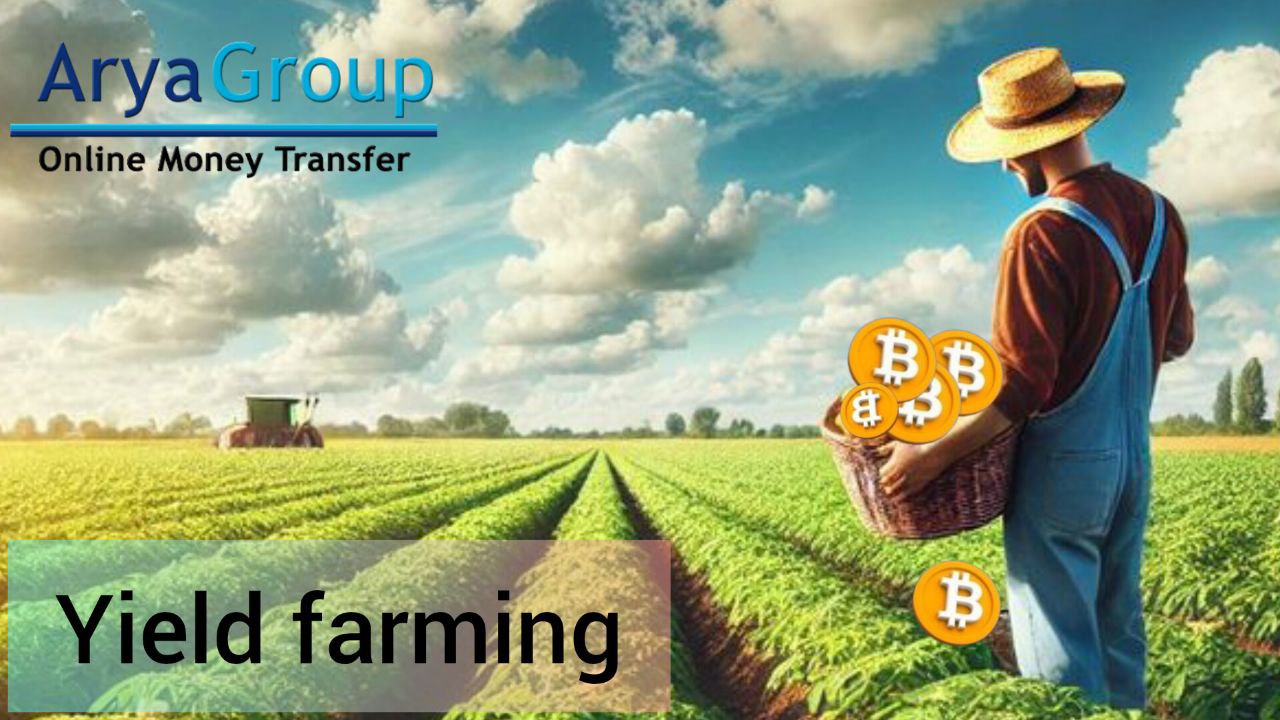what is Yield Farming?

Yield Farming is a method of earning income in the world of cryptocurrencies by deploying digital assets into decentralized finance (DeFi) protocols to generate profits. In this process, users deposit their digital assets into liquidity pools or smart contracts, and in return, they receive rewards such as new tokens, interest, or transaction fees.
Purpose of Yield Farming:
The main goal of yield farming is to maximize returns on digital assets. It involves locking or staking cryptocurrencies within DeFi platforms to earn rewards like new tokens or interest. This activity helps increase the profitability of digital assets, provides liquidity to decentralized financial protocols, and encourages user participation within the DeFi ecosystem. Consequently, yield farming plays a vital role in the development and sustainability of DeFi markets and attracts new investments.
Advantages of Yield Farming:
- Earning profits by holding digital assets
- Access to DeFi protocols and features
- Diversification of investment strategies
Risks and Drawbacks:
- Price volatility of assets
- Technical risks and vulnerabilities in smart contracts
- Risks associated with scams or protocol failures
Specific disadvantages of yield farming include:
- Security risks: Engaging in DeFi may expose users to hacks or exploits of smart contracts, potentially leading to loss of funds.
- Market volatility: Cryptocurrency markets are highly volatile, and price fluctuations can reduce expected gains or cause losses.
- Technical complexity: Yield farming requires a deep understanding of blockchain technology and smart contracts, which may be challenging for beginners.
- Transaction fees: Gas fees on networks like Ethereum can be high during busy periods, reducing overall profits.
- Regulatory risks: Laws governing cryptocurrencies and DeFi are evolving and may impact yield farming activities in the future.
- Platform risks: If a yield farming platform faces issues or insolvency, users’ investments could be at risk.
- Scams and Ponzi schemes: Some projects may be fraudulent, leading to investor losses.
Therefore, it is crucial to thoroughly research and understand the risks before engaging in yield farming.
How Does Yield Farming Work?
- Depositing assets: Users deposit digital assets such as Ethereum tokens (ETH), stablecoins, or other tokens into DeFi protocols like Compound, Aave, or Yearn Finance.
- Lending and borrowing: These assets serve as collateral for borrowing or lending. Other users can borrow these assets and earn interest or rewards.
- Earning yield: By lending or borrowing, users earn rewards such as new tokens or interest, usually based on prevailing market rates and the amount of assets deposited.
- Advanced strategies: Some users employ more complex strategies, such as allocating assets across multiple protocols, using liquidity pool tokens (LP tokens), or staking tokens to maximize yields.
Key points:
- Risks: Yield farming involves risks like price fluctuations, hacking, smart contract vulnerabilities, and liquidity issues.
- Variable interest rates: Rates may change over time depending on supply and demand.
- Technical knowledge: Successful yield farming often requires an understanding of DeFi tools and market dynamics.
Overall, yield farming is an attractive way to generate returns from digital assets, but it should be approached with caution and proper knowledge.
What Are Yield Farming Rewards?
When you deposit digital assets like tokens into a DeFi platform, that platform uses those assets to provide liquidity in pools. In exchange, you typically receive rewards such as specific tokens or interest payments, which may include the platform’s native tokens or other cryptocurrencies.
Types of Rewards in Yield Farming:
- Native tokens: Many DeFi projects reward participants with their own tokens (e.g., Uniswap, Compound, Aave tokens).
- Interest: Some platforms offer interest payments based on the amount of assets deposited.
- Incentive rewards: Certain platforms provide additional bonuses or promotional rewards to attract users.
Important notes:
- Rewards can fluctuate based on market conditions and platform strategies.
- Risks such as price volatility, hacking, and technical errors exist.
- It’s essential to thoroughly understand the platform’s terms before investing.
In summary, yield farming rewards are a way to profit from digital assets, but they require careful management and awareness of associated risks.
Difference Between Staking and Yield Farming:
The main difference lies in their objectives and methods:
Yield Farming:
- Purpose: To generate income by lending or staking assets within DeFi platforms.
- Method: Users deposit cryptocurrencies into liquidity pools or lend assets to earn interest and rewards.
- Outcome: Increased holdings through earnings, along with associated market and technical risks.
Staking:
- Purpose: To support the security and operation of a blockchain network and earn staking rewards.
- Method: Users lock their tokens in specific wallets or platforms (staking nodes) to validate transactions.
- Outcome: Earning staking rewards (often new tokens or transaction fees) and contributing to network stability.
Summary:
Yield farming is primarily focused on profit-making through complex DeFi strategies and activities.
Staking is generally aimed at supporting blockchain network security and is often simpler to participate in.
 English
English
 فارسی
فارسی

Add New Comment